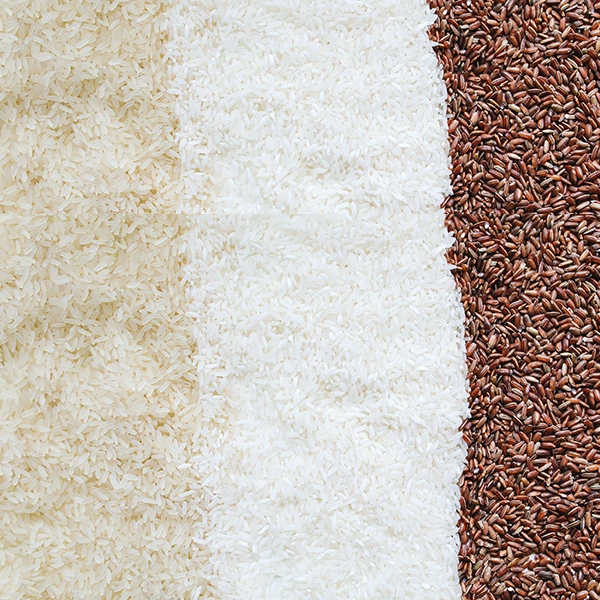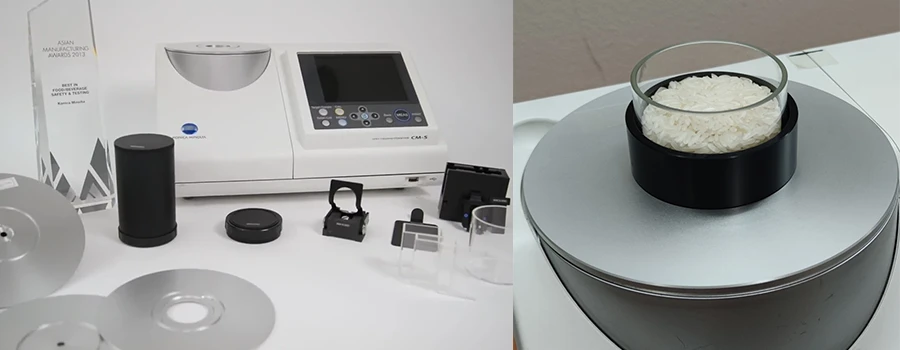Optimizing Rice Quality with Color Measurement

Rice, often referred to as the “essential staple,” holds a significant position in global agriculture. For years, rice breeding programs focused on increasing crop yield to meet the growing demand for this vital food. The primary objective was to produce more rice to feed the expanding population. However, changing consumer preferences and market dynamics have shifted the priorities of rice breeding programs. Today, it is clear that emphasizing rice quality is crucial for success in this industry.
The Significance of Rice Color
When assessing the quality of rice, several factors come into play, such as head rice recovery, grain size, shape, and more. However, one significant quality indicator that stands out is the color, particularly the chalkiness of rice. Chalkiness is a common quality issue found in rice grains. When rice is described as chalky, it means that the grains have opaque or white areas, which differ from the usual translucent appearance of healthy rice. These opaque regions can vary in size and distribution within the grain. Chalkiness occurs due to irregularities in the development of starch granules in the rice kernel’s endosperm. It is often undesirable as it can negatively affect the milling quality, potential marketability, and palatability of cooked rice, among other factors.
Color Measurement of Rice with Spectrophotometers
Traditionally, assessing the chalkiness of rice relied heavily on visual inspection. While this method is relatively quick, it is inherently subjective and can vary from person to person, leading to poor repeatability. In recent years, spectrophotometers have emerged as valuable tools for a more objective, precise, repeatable evaluation.
Measuring the chalkiness of rice using a spectrophotometer is a common and practical approach. It involves measuring the whiteness index of rice samples to quantify the degree of whiteness, which is often used as an indicator of chalkiness. Below are some general preparation and measurement best practices to ensure more reliable and repeatable rice color measurement results.
- Fill at least half of the sample holder or cuvette compatible with your spectrophotometer with the rice sample.
- Gently tap or shake the container to evenly settle the rice grains and eliminate air pockets.
- Use the largest measuring aperture available on the spectrophotometer.
- Take multiple measurements by rotating the sample to different orientations to obtain their average reading.
- Repeat the measurement procedure a few more times to gather data trends for comparison.
Spectrophotometer CM-5 for Rice Color Measurement
Konica Minolta Sensing, a leading color measurement solutions provider, has a wide range of precise and reliable color measurement instruments that find extensive application in the food industry. Among them, the Spectrophotometer CM-5 stands out for its exceptional versatility and user-friendly operation, making it the ideal spectrophotometer for evaluating rice color.
The Spectrophotometer CM-5 offers a wide range of measurement capabilities, including whiteness measurement (WI) and other major color systems such as CIE L*a*b*, etc. With its versatility, this color measurement instrument is suitable for measuring various types of rice, including brown rice and many more. The CM-5 is also equipped with different aperture sizes, including a 30mm measuring area, and is complemented by a range of accessories such as petri dishes, tube cells, etc., enabling easy and consistent presentation and measurement of rice samples. Watch this video to learn more about the learn more about the measurement capabilities of the spectrophotometer CM-5.

Struggling to measure the color of your rice or food products? Contact us to arrange a complimentary consultation with our color application experts now. We are here to provide optimal solutions and help you overcome your color measurement challenges.
